Though conventional extension methods which make use of strong personal rapport between the extension agents and stakeholders have proved to be highly effective in bringing positive attitudinal changes among rubber farmers, situations like COVID-19 demand complementing this with more online services. As social isolation remains one of the most important recommendations in the fight against COVID-19, e-extension gains importance in delivering EAS, opines C Sabu.
CONTEXT
Rubber Plantations play a vital role in the Indian economy, by way of income generation, rural employment, and poverty reduction. There are around 1.32 million rubber growers and 0.6 million workers in the Indian natural rubber (NR) plantation sector. The Indian rubber industry is characterized by the co-existence of a well-established rubber production sector and a fast-growing rubber products manufacturing and consuming sector. The Rubber Industry value chain begins from NR plantations and ends in a huge range of dry rubber- and latex-based products. India is currently the sixth largest producer of NR in the world (651,000 MT in 2018-19). The production capacity in India is around 900,000 MT. The total area under rubber is 822,000 ha, of which 655,000 ha is mature plantations.
The incidence of COVID-19 pandemic and the consequent lockdown have adversely impacted production, processing, plantation development, marketing of primary produce and employment of daily wage earners, such as rubber tappers. The continued lockdown is likely to further aggravate domestic NR availability unless we develop sustainable strategies for tackling such issues. Numerous agencies globally are trying to find solutions to these unprecedented problems. Extension and Advisory Services of the Rubber Board under the Ministry of Commerce and Industry (Government of India) facilitate the transfer of knowledge, information, improved technologies and practices to farmers, promote farmer organizations and support the various actors in the rubber value chain.
EXTENSION AND ADVISORY SERVICES (EAS) OF RUBBER BOARD
The NR plantation sector in India is currently teetering under issues such as climate change, increasing labour/input costs, and fluctuating output prices. Enhancing productivity, reducing production costs, and enhancing value addition are critical in order to address some of these challenges, and EAS need to support farmers on these aspects. Extension and Advisory Services facilitate the transfer of knowledge, information, improved technologies and practices to farmers, promote farmer organizations and support the various actors in the rubber value chain.
Extension approaches
Conventional extension approaches
In the NR plantation sector, extension personnel have been using a wide range of conventional extension approaches, which mainly rely on face-to-face communication. These include: mobilizing farmers; provision of one-on-one advisory support at the field level; organizing demonstrations, on-farm trainings, workshops; and holding informal group discussions, seminars, campaigns using written material (leaflets, pamphlets, etc.). The conventional extension approaches are highly effective for awareness creation and scaling up the adoption level of Good Agricultural Practices (GAPs). However, despite its relatively long history and widespread adoption, significant challenges still exist in providing extension services, including insufficient funds for supporting extension, limited involvement of rural farmers and populations in extension processes, lack of extension research and advanced extension methods. This limits the coverage of extension services, particularly across rural regions and in adapting technological packages to community-specific contexts.
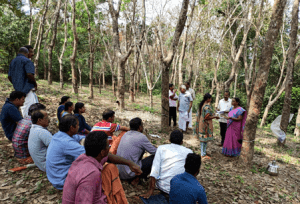 Training on Good Agricultural Practices (GAPs)
Training on Good Agricultural Practices (GAPs)
| Box 1. Conventional EAS tools/methods in practice
Extension is not just about communicating but also about bringing behavioral/attitudinal changes for adopting Good Agricultural Practices (GAPs) for sustainable agriculture. Hence, it is necessary that growers and other stakeholders are motivated and capacitated through the conventional approaches mentioned below. These primarily rely on personal contact, interactions and continuous follow up and are expected to bring in positive attitudinal changes for technology adoption as well as scaling up of the adoption level. 1. Demonstrations/on-farm trainings Demonstrations – one of the most common extension methods – involve showing a technique/skill, input, practice or technology, and its potential benefits to a target audience. This is a highly versatile method which can be used on a single occasion or over a period of time, depending on the objectives (e.g., tapping, processing and GAP demonstrations). Demonstrations are an integral part of other extension methods/approaches, such as Farmer Field Schools (FFS) and community workshops. 2. Structured trainings Agricultural extension activities rely on structured learning events, such as courses and workshops led by a facilitator or trainer (or a team of facilitators/trainers). Learning events for growers and other stakeholders typically use classroom, field sessions, or a combination of both. It relies on methods such as demonstrations and individual exercises. They may consist of a one-time event or could be multiple events held periodically, vary in length, and may be residential (e.g., Training programmes under Tappers Intensive Skill development Programme [TISP], Tapping Skill development School [TSS], District Development Centre [DDC], and Regional Research Training Centre). 3. Seminars/Group discussions Seminars and group discussions are a highly interactive form of learning where participants engage in discussions. Case studies, brainstorming, and discussion are tools frequently used to engage participants and facilitate learning. Group discussions are being conducted regularly for implementing development and extension schemes and also for taking policy decisions on Rubber Producer Societies’ (RPS) activities. 4. Annual campaign meetings Campaign meetings, which are meant to benefit small groups, are organized in association with RPS simultaneously at various centers every day continuously for about a month. These campaigns help to create widespread awareness and motivation so as to adopt the technological innovation dealt with. Annual campaign meetings have been conducted regularly since 1985. |
 Practical training on Rubber nursery aspects, Tapping and Rubber sheet processing
Practical training on Rubber nursery aspects, Tapping and Rubber sheet processing
Participatory extension
In addition to the conventional top-down extension approaches discussed above, other innovative extension approaches in the NR sector focus on multi-disciplinary, collaborative and participatory technology development involving assessment and refinement of new technologies; and the use of participatory rural appraisal techniques for identification of problems in the plantation, and development of appropriate action plans. The RPS together with the village-level cluster of small rubber growers, serve as an effective extension arm of the Rubber Board. The smallholder empowerment approach – adopting cluster-based and community-driven development through the formation and institutionalization of RPS – was a milestone in the progress and development of the natural rubber sector. Many of the extension schemes of the Rubber Board, being implemented through the RPS, are based on a participatory extension approach.
Farmer centered Extension
Farmer-to-Farmer Extension (FFE) is a complementary approach and involves farmers sharing knowledge on agricultural innovations within their communities. Farmer Field Schools (FFS), Common Interest Group (CIG)/Farmer Club (FC)-based activities, and exposure visits based on the concepts and principles of farmer-centered learning, and provision of handholding support to help farmer clusters – is yet another shift in this line. Majority of the on-farm training programmes that focus on the capacity building of stakeholders in the NR sector, are designed in line with the key principles of the FFS.
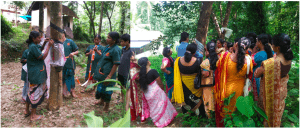 Training for rain guarding to Kudumbasree women labour group and Field training for women labour cluster
Training for rain guarding to Kudumbasree women labour group and Field training for women labour cluster
Market-led extension
Market-led extension has got the potential for disseminating the most recent market information to the farming community and enabling farmers to get optimum returns out of their enterprises. The RPS emphasis is on activities which improve the processing and marketing facilities of small rubber growers. For members, training classes are conducted so that better grade rubber sheets can be produced. Facilities for processing good quality rubber are also provided on a group basis at Group Processing Centers (GPCs) under the auspices of RPS. It helps in producing sheets of uniform grade and export quality. The realization of higher prices for better grades has made the small growers ‘grade- conscious’, leading to improvement in the quality of the sheets. Arrangements for marketing of products, such as latex, sheets (grade-wise), field coagulum, etc., are also made through companies in the RPS sector.
ICT-enabled extension
ICTs are very useful in EAS and in facilitating ‘reach out’ to rural farmers. The Rubber Board provides the updates of both national and international market rates of natural rubber through SMS throughout the country. Advisories and information are being provided to the growers through SMS, WhatsApp groups etc., by Extension Officers. Mobile apps, such as Rubber Kisan app, Rubber Soil Information System (RubSIS), etc., are the other innovations being used extensively.
COVID-19 AND THE NR SECTOR
Small growers and labourers have been the most affected by COVID-19 as their household incomes are under threat. Growers are not always well-informed and need support to deal with the crisis; and they have restricted access to inputs and labour for plantation management, harvesting/processing and marketing. Rubber Board is an institution with trained technical staff that is trusted by communities and farmers, have local reach, and have good communication skills. Our EAS actors are in a unique position to assess the situation in the field, provide tailored services, and inform governments, who need to take rapid and adequate measures in ensuring sustainability, both in the short as well as long terms. However, extension personal are currently forced to stay away from regular face-to-face contact, and awareness and capacity building programmes have slowed down as governments are now mandating social distancing to slow down the spread of this disease by minimizing close contact between individuals. Hence, to adapt to the present situation and also operate within the government regulations, EAS providers need to rapidly change their way of functioning (Box 1).
| Box 1.What needs to be done
EAS adaptations
EAS service provisions To reduce COVID-19 impact
To help increase resilience and rebuild livelihoods
Empowering of EAS system
|
REFORMS IN EXTENSION APPROACHES
In this difficult time, the role of EAS is even more critical than before in bridging the realities of local communities with government actions, and helping growers to overcome new challenges. EAS providers need to rapidly adapt to the emerging situation and change their approach so as to better respond to this crisis.
Undertake conventional extension with suitable changes
Conventional EAS activities that focus on motivating, mobilizing and capacity building of farmers through one-on-one advisories, demonstrations, on farm trainings/workshops, informal group discussions etc., at field level are to be conducted, keeping in mind social distancing norms. The number of participants may be reduced so as to ensure social/physical distancing. Use of PPE by officials and participants and other guidelines are also to be followed while conducting these awareness and capacity building programmes. The number of such events may be maximized for achieving more outreach.
Harnessing ICT for complementing conventional extension
Digitally-enabled extension tools can also be utilized for complementing conventional extension services with cost-effective and enhanced farmer reach out. The Rubber Board may utilize the following digital tools for EAS against the COVID-19 backdrop:
Mobile Phone (Mobile extension): Mobile phones, both conventional and smart phones, can be used to provide extension and advisory services. Extension Officers can call farmers to provide information, or the extension organizations can provide information through ‘pushed’ or ‘pulled’ SMS.
Television (TV): TV conveys a sense of importance and legitimacy, whether programmes are transmitted through national government stations, community stations or private stations. TV can be combined with other ICTs tools, such as mobile phones, to create a two-way communication flow (e.g., by asking questions during live TV shows). Varieties of programmes which include features, documentaries/success stories of farmers, research inputs, quizzes, crop seminars, and live phone-in programmes can be broadcast. Scrolling news/advice can also be transmitted through cable TV network.
Radio: Radio (including FM stations, community and rural radio) can be used as a one-way or two-way communication channel to broadcast EAS content using different formats, such as radio campaigns, radio talk, on-farm interviews, and live talk shows. Radio is often combined with other ICTs, such as mobile phones, which allow farmers to provide feedback and ask questions during call-in programmes. The Rubber Board may host such programmes for EAS.
Use of social media: For EAS, whose primary component is communication, social media can be a potential goldmine. In the COVID-19 scenario, face-to-face teaching cannot be carried out physically. Social media offer great potential to convey important content at a distance or to provide targeted suggestions and ideas. Social media can help farmers to seek information on farm operations, clarify their doubts, and give immediate access to market-related information. However, this can be possible only when they are socially networked with extension agents, progressive farmers and other actors in the value chain – in virtual space. Two of the most popular social media tools prevalent in India – Facebook and WhatsApp – can be used very effectively.
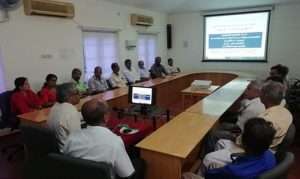 Campus training for growers with ICT tools
Campus training for growers with ICT tools
WhatsApp groups for peer learning
This social media tool enables sharing information with multiple users in multiple forms – ranging from text-based messages to audios, visuals; audiovisual and even web links – making it an information-rich platform. This tool is simple and easy to use, has low internet data requirements, and is becoming increasingly popular in rural India. WhatsApp offers a communication approach that can be quite flexible, as ‘any time-any place’ interaction is possible in most of the Indian and foreign languages. Even diffident and shy farmers can participate through encouragement and support. User feedback is easier to receive, and it is also prompt. It is easier for farmers to communicate with peers, extension professionals and experts in real time through WhatsApp group networks. The opportunities for clarification and removal of post-training doubts among farmer participants remain poor. As a result, a sizeable proportion of knowledge and information gained by participants may be lost. Thus use of WhatsApp for continued interaction after the training programme is over can offer peer learning among farmers. This can also offer an opportunity for farmers to ask for support during implementation of knowledge and skills learnt during the training.
WhatsApp can be used to offer context-specific information by linking farmers on one side and resource persons of different disciplines on the other, interlinked through a common mediator. The role of the mediator would be to receive the queries from the farmers on one side and sending them individually to different experts. After receiving answers from different experts, the mediator can share the pooled advice in an easily understandable form to the farmer clients.
Video chat via Facebook or the Messenger app
Facebook is found to be the most popular social media platform used by EAS actors. Facebook’s new group video chat feature – Messenger Rooms – is now available, and is ready to compete with services like Zoom, Skype, Google Meet and Microsoft Teams, as more people turn to video chat during coronavirus lockdowns and quarantines. A video chat room via Facebook or the Messenger app can be created, and up to 50 people can join a video call, even if they don’t have a Facebook account. There are no time limits on calls. Facebook users will be able to share links enabling non-users to join Rooms via a web browser on both desktop and mobile, eliminating the need to download an app or create an account as in the case of other services.
Farminars/Farm seminars
A webinar is a seminar that is held online. The live transmission of this is similar to a normal lesson, but the participants can participate online regardless of their location. The interaction usually takes place via chat. By recording a webinar, the same content can also be watched repeatedly, and at different times. Farminars/Farm seminars are a special type of webinar, namely mobile webinars. They differ from webinars in that they are not transmitted from a classroom, but live from outside, directly on site, on a farm or in the field (virtual field inspection). This places special demands on technology and people.
Webinars and farm seminars offer many advantages – less time required due to no travel, only short absences from the office instead of whole days, better accessibility; no costs/appointments for seminar rooms, no printed documents, only simple recording needed. There are various tools/software platforms on which webinars can be conducted (Box 2). Some are more focused on one-way communication, while others offer more options for interaction.
| Box 2. Examples of Webinar Apps
Zoom: Users outside of China can still sign up for the free version of Zoom to host up to 100 participants, access free for 1-to-1 meetings, and create group meetings lasting up to 40 minutes. Avaya Spaces: Avaya was one of the conferencing and communication companies on the frontline of the Coronavirus outbreak. Avaya Spaces is available to all educational institutions and non-profit organizations across the globe. The free solution supports video conferencing for up to 200 participants, with access to video, voice, chat, content sharing, and online meetings. Cisco Webex: Cisco has expanded the capabilities on its free offer in all countries where the technology is available. The updated free version now includes support for up to 100 participants, as well as unlimited usage with no time restrictions. PGi: PGi, a global business communications and collaboration provider, offers GlobalMeet Collaboration for free unlimited meetings for up to 125 participants with HD multipoint video, Dolby voice audio, local dial-in access, recording, and many more features. Sangoma: Sangoma Meet is highly secure, fully encrypted password-protected video conferences to avoid unauthorized users from jumping into a video meeting. Sangoma has launched the new service completely free of charge to everyone during the COVID-19 period. Facebook: Gives Free Portal Video Chat Devices to any employee that requests one. |
The Rubber Board may host online training programmes, seminars, campaign programmes on suitable social media during COVID-19 as part of its EAS operations. Use of social media still has to face a few challenges (Box 3) and these need to be addressed too.
Box 3. Social media in EAS – Challenges
|
THE WAY FORWARD
Exploit the potential of social media in EAS: Since social media is fast becoming an integral part of EAS, especially in the changing scenario, faster actions are required for better utilization of social media. To overcome challenges, a multi-pronged approach is needed at different levels:
Individual level:
- Extension officers should take personal initiative to use social media as part of their job within the norms of institutional guidelines.
- Farmers and other stakeholders should be encouraged to connect with social media platforms.
Organizational level:
- Formulate suitable social media policy and guidelines; coordinated strategies are required.
- Encourage use of social media to promote organizational goals, actions, and success.
- Train employees, not just at the bottom level, but also at higher levels of the hierarchy; this is needed to help them understand and use social media appropriately.
- Organize workshops and hands-on-training for clients to create awareness about utility of social media and also develop the skills to use it.
- Employ a social media officer or communication officers to manage social media accounts, create content with experts, and for gatekeeping.
Infrastructural level:
- Basic infrastructure – power supply and access to network services are necessary to access social media.
- Free Wi-Fi in offices would be helpful in accessing social media.
Strengthen Rubber Producers Societies as Rural Resource Centres (RRC)
Rural Resource Centres (RRC)/Farmer Facilitation Centers (FFC) offer a community-based approach for providing EAS. RRC is a physical location set up to improve farmers’ access to technologies, knowledge and training, and to promote farmer innovation, interactive learning and networking. RRC typically have a training hall and other training facilities. They offer various services, including training, sale of inputs/farm produce, advice on new technologies and approaches through demonstrations, access to ICTs, and also link growers to markets. Rubber Producers Societies having such facilities may be designated as RRC/FFC for facilitating offline and online training programmes.
 Annual mass contact programme and general body of Rubber Producer Society
Annual mass contact programme and general body of Rubber Producer Society
END NOTE
Conventional extension methods which make use of strong personal rapport between the extension agents and stakeholders have proved to be highly effective in strengthening the Indian NR sector. While use of these methods will continue to remain important, these need to be supplemented with ICT-based approaches in order to deal with the new challenges posed by the spread of COVID-19.
Acknowledgements
I sincerely express my gratitude to Sri. KP Rajeev, Assistant Development Officer, Rubber Board, for sharing his valuable inputs during the course of writing this paper. I am also immensely grateful to officials of the Statistics & Planning Division and Rubber Research Institute of Rubber Board for sharing data and suggestions for content development.

C Sabu, Joint Rubber Production Commissioner (Retd.), Rubber Board, Kottayam, Kerala. (Email: csabu@hotmail.com)


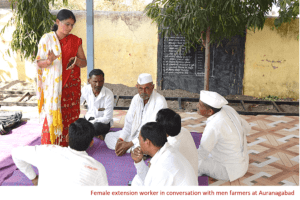
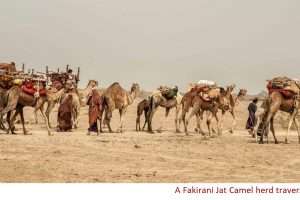
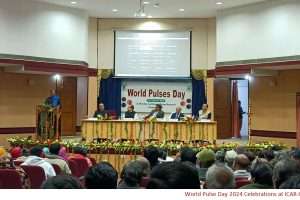
A highly informative blog on the different extension systems in the rubber sector. It clearly highlights the diverse technology transfer approaches employed by the extension system in effectively reaching farmers.